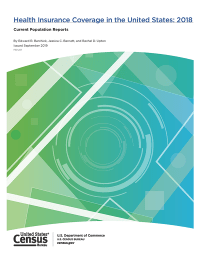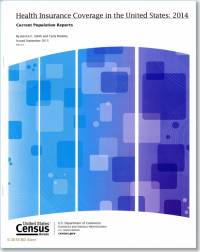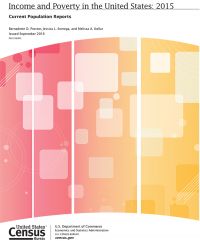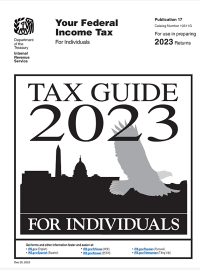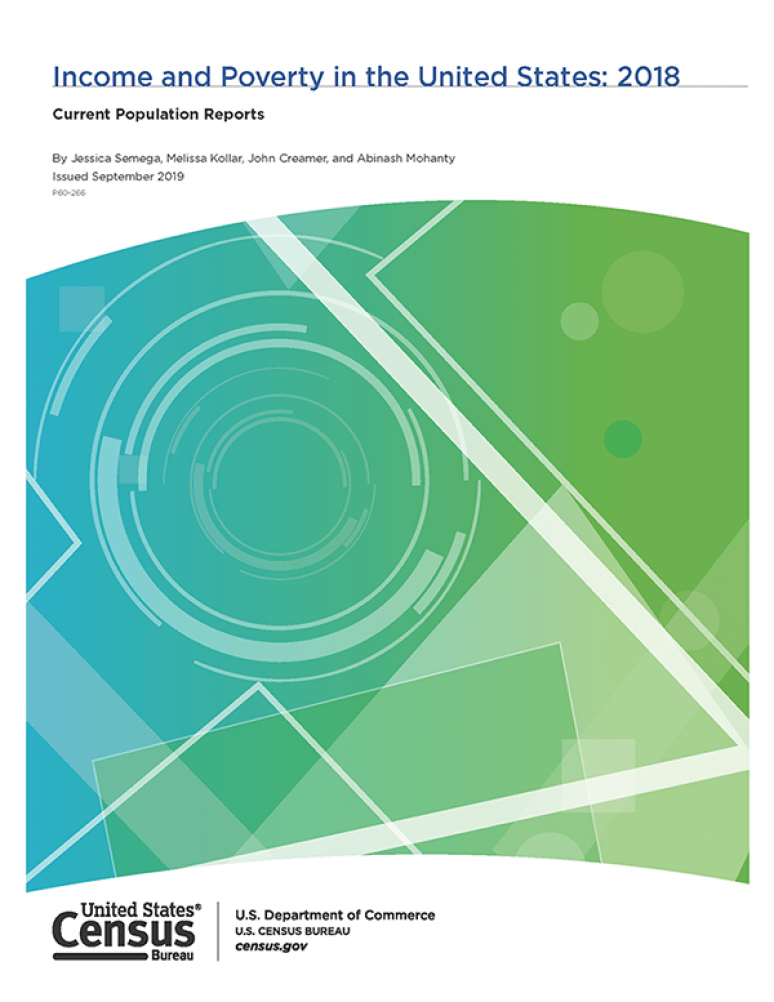
Statistics included within this updated report have been developed from prior Current Population Surveys (CPS) and Annual Social and Economic Supplements (ASEC) carried out by the Census Bureau.
There are two key sections to the report; one on devoted to income, including household income, and wages/earnings, and the other dedicated to on poverty.
The report extensively uses charts and graphs to clearly define the highly segmented statistical findings which provides users an in-depth profile of how the nation is faring from the point of income and poverty as of 2018.
INTRODUCTION 1
Summary of Findings 1
INCOME IN THE UNITED STATES 1
Highlights 1
Household Income 3
Caution for Historical Comparisons 3
Type of Household 4
Race and Hispanic Origin 4
Age of Householder 4
Nativity 5
Region 6
Residence 6
Income Inequality 6
Equivalence-Adjusted Income Inequality 8
Earnings and Work Experience 9
POVERTY IN THE UNITED STATES 12
Highlights 12
Race and Hispanic Origin 15
Sex 15
Age15
Nativity 16
Region 16
Residence 17
Work Experience 17
Disability Status 17
Educational Attainment 17
Families 17
Shared Households 18
Depth of Poverty 18
Ratio of Income to Poverty 18
Income Deficit 19
ADDITIONAL INFORMATION ON INCOME AND POVERTY 19
State and Local Estimates of Income and Poverty 19
Longitudinal Estimates 20
The Supplemental Poverty Measure.20
Interagency Technical Working Group on Evaluating Alternative Measures of Poverty 21
SOURCE AND ACCURACY OF THE ESTIMATES 21
FIGURES
Figure 1. Median Household Income and Percent Change by Selected Characteristics 2
Figure 2. Real Median Household Income by Race and Hispanic Origin: 1967 to 2018 5
Figure 3. Income Distribution Measures and Percent Change Using Money Income and Equivalence-Adjusted Income 7
Figure 4. Median Earnings and Percent Change by Selected Characteristics 9
Figure 5. Female-to-Male Earnings Ratio and Median Earnings of Full-Time, Year-Round Workers 15 Years and Older by Sex: 1960 to 2018 10
Figure 6. Total and Full-Time, Year-Round Workers With Earnings by Sex: 1967 to 2018 11
Figure 7. Number in Poverty and Poverty Rate: 1959 to 2018 12
Figure 8. Poverty Rate and Percentage Point Change by Selected Characteristics: People 13
Figure 9. Poverty Rate and Percentage Point Change by Type of Family Families and People 14
Figure 10. Poverty Rates by Age and Sex 15
Figure 11. Poverty Rates by Age: 1959 to 2018 16
Figure 12. Demographic Makeup of the Population at Varying Degrees of Poverty: 2018 19
APPENDIXES Appendix A. Estimates of Income 23
How Income Is Measured 23
Business Cycles 23
Annual Average Consumer Price Index Research Series (CPI-U-RS) Using Current Methods All Items: 1947 to 2018 24
Cost-of-Living Adjustment 24
Poverty Threshold Adjustment 24
Appendix B. Estimates of Poverty 49
How Poverty Is Calculated 49
Poverty Thresholds for 2018 by Size of Family and Number of Related Children Under 18 Years 49
Weighted Average Poverty Thresholds in 2018 by Size of Family 49
Appendix C. Replicate Weights 69
References 69
Appendix D. Comparison of 2017 Income and Poverty Estimates using the Legacy and Updated Processing Systems 71
Income 72
Poverty 72
Appendix E. Additional Data and Contacts 77
Customized Tables 77
New Data Platform 77
Public Use Microdata. 77
CPS ASEC 77
Taxes and Noncash Benefits 77
Census Data API 77
Topcoding 77
Comments 77
APPENDIX TABLES
Table A-1. Income Summary Measures by Selected Characteristics: 2017 and 2018 25
Table A-2. Households by Total Money Income, Race, and Hispanic Origin of Householder: 1967 to 2018 26
Table A-3. Income Distribution Measures Using Money Income and Equivalence-Adjusted Income: 2017 and 2018 34
Table A-4. Selected Measures of Household Income Dispersion: 1967 to 2018 35
Table A-5. Selected Measures of Equivalence-Adjusted Income Dispersion: 1967 to 2018 41
Table A-6. Earnings Summary Measures by Selected Characteristics: 2017 and 2018 45
Table A-7. Number and Real Median Earnings of Total Workers and Full-Time, Year-Round Workers by Sex and Female-to-Male Earnings Ratio: 1960 to 2018 46
Table B-1. People in Poverty by Selected Characteristics: 2017 and 2018 50
Table B-2. Families and People in Poverty by Type of Family: 2017 and 2018 51
Table B-3. People With Income Below Specified Ratios of Their Poverty Thresholds by Selected Characteristics: 2018 52
Table B-4. Income Deficit or Surplus of Families and Unrelated Individuals by Poverty Status: 2018 53
Table B-5. Poverty Status of People by Family Relationship, Race, and Hispanic Origin: 1959 to 2018 54
Table B-6. Poverty Status of People by Age, Race, and Hispanic Origin: 1959 to 2018 62
Table B-7. Poverty Status of Families by Type of Family: 1959 to 2018. 67
Table D-1. Income Summary Measures by Selected Characteristics: 2017 Legacy and Updated Processing Systems 73
Table D-2. Income Distribution Measures Using Money Income and Equivalence-Adjusted Income: 2017 Legacy and Updated Processing Systems 74
Table D-3. Earnings Summary Measures by Selected Characteristics: 2017 Legacy and Updated Processing Systems 75
Table D-4. People in Poverty by Selected Characteristics: 2017 Legacy and Updated Processing Systems 76
A valuable resource for policymakers and researchers in government and in the private sector. Economic policymakers, government workers and contractors, advocates for the less fortunate and minority communities, political candidates, businesses and organizations concerned with statistics related to the income and poverty realities will find this publication essential. Instructors of economics, political science students and professors studying economic demographics will may also find this publication helpful to their research
Product Details
- Semega, Jessica
- Current Population Reports, P60, No. 266
- Poverty


